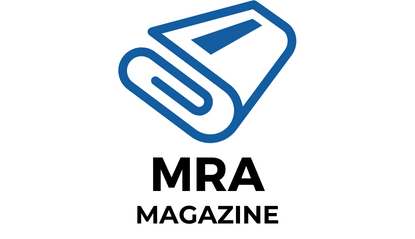How to Set Up a Habitat for a Blind Guide Dog in Retirement?

Blind guide dogs have been the eyes and saviors of many visually impaired individuals for years. They serve as a bridge to the world, enabling their owners to navigate their surroundings safely and independently. But what happens when these service dogs reach their golden years and retire? This is a question many dog owners grapple with, especially when their trusted companion begins to lose its own vision.
In this guide, we’ll discuss how to create an accessible, safe, and comfortable environment for a retiring blind guide dog. We’ll address several facets, from modifying your home to promoting your dog’s wellbeing, ensuring your faithful friend can enjoy its retirement years in comfort and security.
A voir aussi : What’s the Best Nutrition Plan for a German Shepherd with EPI (Exocrine Pancreatic Insufficiency)?
Creating a Safe and Accessible Environment
The first step to setting up a habitat for your retired guide dog is making your home safe and accessible. As dogs age and lose vision, they rely more on their sense of touch and smell. Therefore, maintaining a consistent layout in your home will help your dog navigate the environment confidently.
Consider installing protective padding on sharp edges of furniture to prevent injury. Use scented markers on different rooms, so your dog can identify them easily. It’s also helpful to provide a dedicated space for your dog, complete with a comfortable bed and easy access to food and water.
A lire aussi : What Are the Best Non-Clumping Cat Litters for Kittens Prone to Ingesting Litter?
Remember not to leave hazards like loose cables or small objects around, as these could pose a risk. Essentially, the aim is to create an environment that your dog can navigate safely without sight.
Enhancing Your Dog’s Quality of Life
While physical adjustments to your home are crucial, so is ensuring your dog’s overall quality of life. This means catering to their emotional, mental, and physical needs.
Regular exercise is essential, even if your dog is blind. Go for gentle walks, bearing in mind that the routes should be familiar and safe. You should also spend quality time with your dog, offering affection, and reassurance.
Stimulating your dog’s remaining senses is also beneficial. Scented toys, textured chew toys, and even sound stimulation can provide mental stimulation and promote overall wellbeing.
Utilizing Technology and Services
In this digital age, technology can play a significant role in making a blind dog’s life easier. For instance, GPS trackers can help you monitor your dog’s whereabouts and ensure their safety.
Moreover, various organizations such as the Guide Dog Users Inc. (GDUi) and American Council of the Blind (ACB), offer resources and support for owners of retired guide dogs. They organize various events and share valuable information through their websites and email newsletters. Be sure to subscribe and connect with these organizations.
Training and Relearning
Just as your guide dog was trained to assist you, it will need to learn how to navigate the world without sight. Relearning commands and adjusting to touch and sound cues will be a critical aspect of your dog’s transition.
Professional trainers, many of whom can be found through GDUi or ACB, can provide valuable advice and assistance for these training needs. Remember, patience is key during this time. It is a new experience for both you and your dog.
Reading Materials and Resources
There are numerous books and resources available in Braille and other accessible formats that can help you understand and support your blind dog better. From understanding dog behavior to providing health care and emotional support, these resources can be invaluable.
Also, connecting with other dog owners who have gone through the same experience can be very beneficial. They can share their journey and offer tips and advice that you may find useful. Organisation such as GDUi and ACB often have forums or online communities where you can connect with these individuals.
In conclusion, while the thought of your guide dog losing its vision can be daunting, remember you’re not alone. There are numerous resources and technologies available to help you. With the right modifications, care, and support, your retired guide dog can still lead a happy and fulfilling life.
Advanced Tools and Services for Blind Guide Dogs
In the ever-evolving world of technology, numerous advancements are designed to aid blind guide dogs and make their lives easier. For instance, GPS trackers are a useful tool to monitor your dog’s movements and ensure they are safe, especially when they are in unfamiliar environments or during their exercise routines.
Additionally, there is an array of services and resources offered by organizations like the Guide Dog Users Inc. (GDUi) and American Council of the Blind (ACB). These organizations are dedicated to providing valuable support to owners of retired guide dogs. They regularly organize informational events and disseminate useful content through their websites and newsletters. Connecting with such organizations can provide much-needed assistance and guidance, and it also opens doors for interaction with a community of people encountering similar experiences.
Furthermore, there is a growing trend of accessible pharmacies catering to pet health. These pharmacies provide medications and health products specifically designed for pets with visual impairments. Getting your guide dog’s medications from these pharmacies can ensure they are getting the best possible care.
Finally, there are numerous digital platforms like social media and dog handlers’ forums where you can connect with other guide dog owners. These platforms provide an opportunity to share experiences, tips, and resources.
Final Thoughts and Encouragement
The retirement of guide dogs, especially when they start losing their vision, generally brings a mixture of emotions for the owners. However, it’s crucial to remember that despite their blindness, these loyal companions can still lead a fulfilling and happy life. With proper planning, adjustments, and supportive actions, you can help your guide dog navigate this new phase of life with ease and comfort.
One of the most important things is to maintain patience and provide constant emotional support to your dog. It’s an entirely new world for them too. The transition might seem challenging initially, but with time, you both will find a rhythm that works.
You are not alone in this journey. There is a whole community of guide dog owners, organizations like GDUi and ACB, and a plethora of available resources to support you. You can always turn to these resources for advice, guidance, or even emotional support.
Remember, your guide dog has been a faithful friend and aided you in your journey. Now it’s your turn to guide them in their journey. While their physical health is significant, their mental health should not be overlooked. Spend quality time with them, reassure them of your presence, and shower them with love.
In conclusion, setting up a habitat for a blind guide dog in retirement may be a challenging task, but it’s well worth it. It’s a way to give back to your loyal friend for the service they’ve provided. These dogs have spent their lives providing service to people with disabilities, particularly the visually impaired. They deserve their retirement years to be as comfortable and enjoyable as possible.
